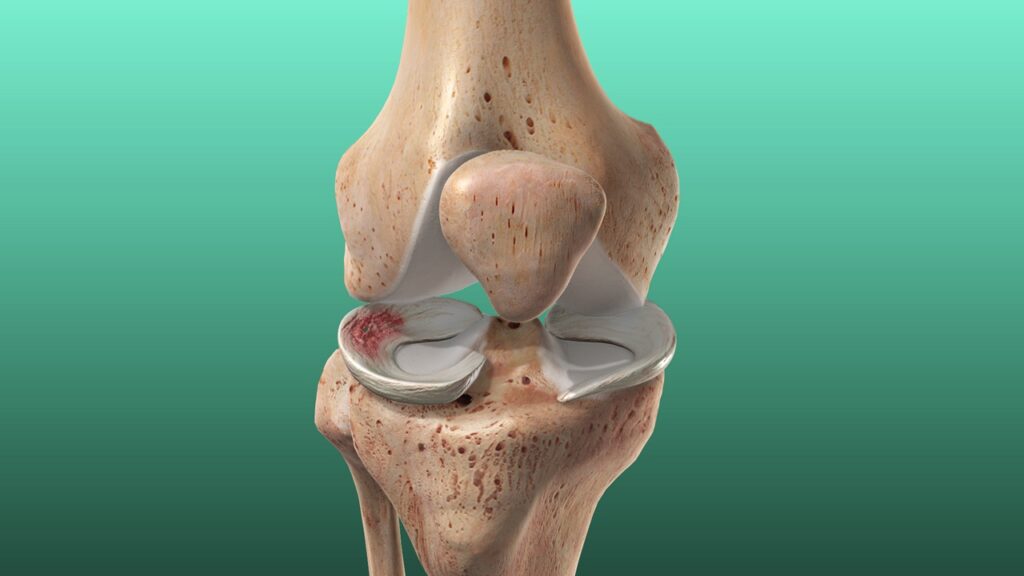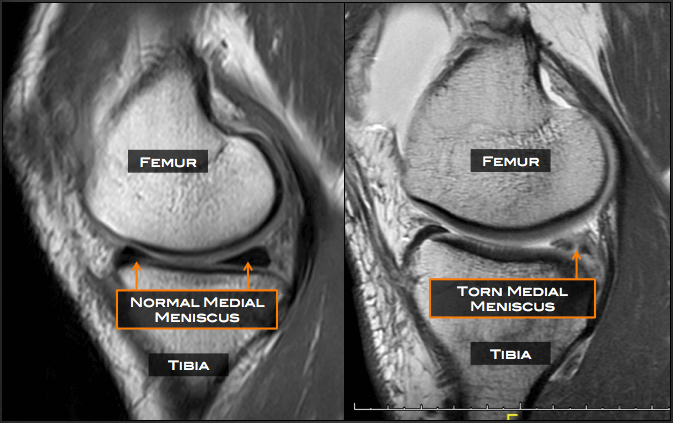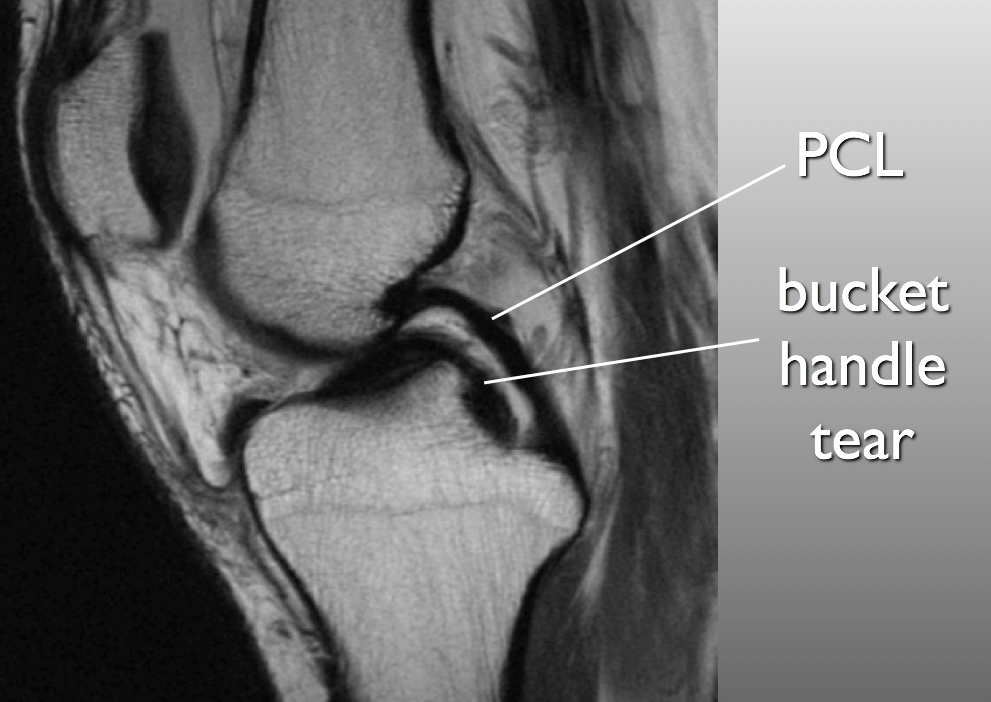
Meniscus Anatomy
There are two meniscus in knee.
The lateral meniscus is smaller, circular and “O-shaped”.
Medial Meniscus is thinner, broader and “C-shaped” with a flat under surface.
Medial meniscus is much broader posteriorly and is attached firmly to medial articular surface of tibia, joint capsule and tibial collateral ligament at the circumference by coronary ligament.
Function:
- Load distribution
- shock-absorptio
- Stability
Types of Meniscus Injury
Type of injury depends on location or pattern.
Location – A tear may be located in the anterior horn, body, or posterior horn.
A posterior horn tear is the most common. The meniscus is broken down into the outer, middle, and inner thirds.
The area in which the tear is located will determine the ability of the tear to heal, since blood supply in that area is critical to the healing process. Tears in the outer 1/3 have the best chance of healing.
Pattern – Meniscal tears come in many shapes. Examples of the various patterns are:
- Longitudinal
- Bucket-Handle
- Displaced bucket handle
- Parrot beak
- Radial
- Displaced flap
- Horizontal
- Degenerative
A complex tear – includes more than one pattern.


Symptoms and Diagnosis
Acute tears are often sports related and usually the result of a twisting injury in the younger, active adult population. Symptoms of an acute tear are usually pain, swelling, and movement irregularities. When the tear gets in the way of normal knee motion, the knee can “catch” or “lock” as it moves.
Degenerative tears are more common in the older population. The patient may experience repeated swelling, but often can’t recall any specific injury. The swelling also may be the result of an injury caused by a very minor movement. Mechanical symptoms, such as knee catching or locking, often exist. Or, the patient may simply experience pain.
- Physical examination
- MRI
MRI is most sensitive in diagnosing meniscal injury, but it also has a high false positive rate. MRI grade III signal is indicative of a tear is linear high signal that extends to either superior or inferior surface of the meniscus.
Bucket handle meniscal tears may be indicated by “double PCL” sign or “double anterior horn” sign.
Treatment and Recovery
Non-operative Treatment Many small meniscal tears will heal without surgical treatment. Also, some tears may have no symptoms. Partial tears, degenerative tears, and stable tears may be observed for 2 – 3 months. If symptoms disappear, no surgery is needed. The use of a knee brace and restriction of activities may be recommended to prevent further injury. Surgical Treatment Surgical treatment for a meniscal tear may be indicated if: Symptoms last for more than 2 – 3 months A displaced tear causes the joint to lock The anterior cruciate ligament is also injured – In this case, the knee is highly unstable and excessive motion exists within the joint. The meniscus is unlikely to heal without treatment. The patient is a high-level athlete If surgery is recommended, the procedure chosen is usually dependent on the location and type of meniscal tear. Procedure is performed using an arthroscope and usually don’t require an overnight hospital stay. Trephination/ Abrasion Technique Partial Resection Complete Resection Meniscal Repair Meniscal Replacement Post surgery patient is not allowed to put weight on the operated leg for 2 to 3 weeks. A long leg brace is given for immobilization. Physio should begin immediately after surgery which includes Static Quads Ankle Pumps Gentle range of movement exercises are started around three weeks targeting 0 to 45° of flexion only. This is followed by partial weight-bearing walking and regaining full range of movement by end of six weeks. At this stage full weight-bearing walking and advance rehab is started in preparation for return to sports. Meniscus repair should be considered in a young patient to improve the functional recovery of the knee joint if the Meniscus is repairable
